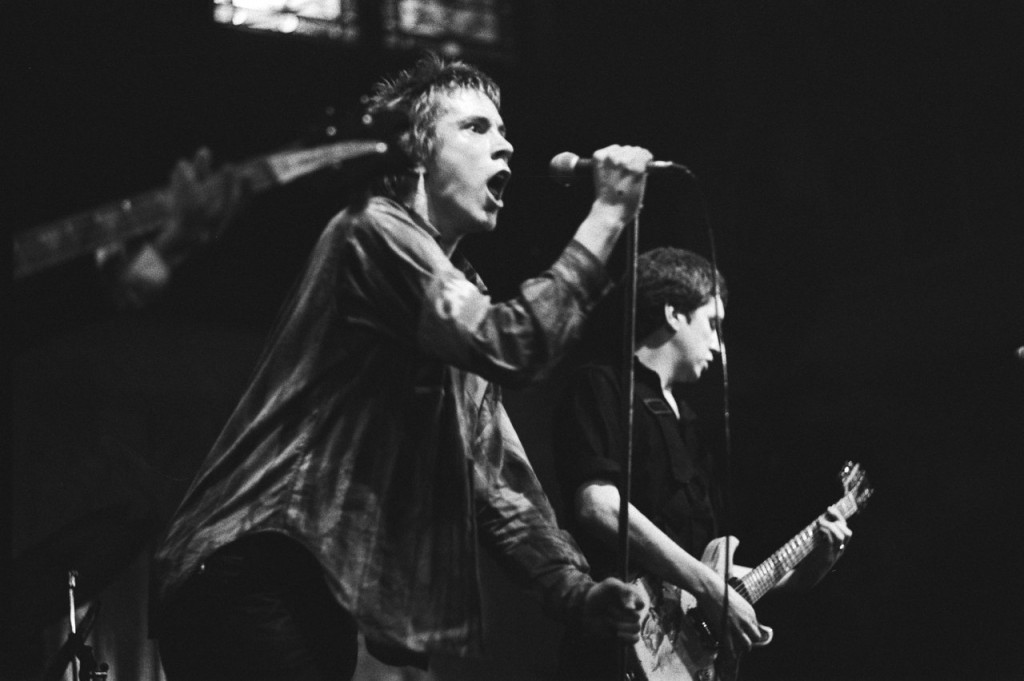The Sex Pistols managed to leave a lasting impression on the world of punk with only two years together as a band. Through their hard-hitting brand of anarchic, chaotic punk they soon found themselves the center of much controversy in the UK, as well as being key influencers on pretty much every punk act that followed them. They were another of the earlier punk bands, so the guitar style of Steve Jones helped to shape the entire genre. His style is relatively straightforward (as expected), but he wasn’t afraid to throw in some basic solos and licks to add some musical texture.
Bio
Steve Jones was born in London in 1955, and started playing the guitar in his teens. He was inspired by bands like the Stooges, the Faces and the New York Dolls, and managed to pursue his musical interest by stealing equipment from other musicians. After spending some time frequenting a controversially-named clothes store (“Sex,” owned by one New York Dolls manager Malcolm McLaren) with Paul Cook (the band’s drummer), they were encouraged to start a band and the Sex Pistols were formed in the mid-seventies. After being dropped from EMI (and other labels) thanks to their controversial style, they were eventually able to record a full-length album.
Notable Recordings
“Never Mind the Bollocks Here’s the Sex Pistols” is widely regarded as one of the best albums ever made, stuffed full of anti-authoritarian anthems, such as “God Save the Queen,” “Anarchy in the UK” and “Pretty Vacant.” These have become classic punk songs, and the entire album is full of songs which define the genre. Since then, several live recordings have been released, but all focused around the core songs from the seminal album.
Techniques
The guitar style of Steve Jones is pretty much the same as his proto-punk heroes, focusing around power chords thrashed with boundless energy. Jones uses three-note power chords, though, opening things up a little more from the two-note styles of Johnny Thunder and Johnny Ramone. You still don’t need to venture too far from the traditional mold in the way of chords, but although it’s built from four chords (like many classic punk songs), “Pretty Vacant” brings in the flattened seventh, producing a sound reminiscent of the garage rock acts of the late 60s.
Palm muting features in many Sex Pistols songs, notably in the verse section to “God Save the Queen.” Laying the edge of your palm across the strings while you play accomplishes this effect. Use the edge of your palm with your pinky, and move closer to the bridge if you’re choking the strings too much. You’re aiming for a thick, chugging sound in your muted power chords. This produces a quieter backing for the vocals whilst still maintaining the energy, and makes it easy to build up to a big chorus.
Finally, Steve Jones didn’t discount solos out of hand in the way Thunder and Ramone did, with a notable lead section in “Anarchy in the UK.” This is built on a simple two bar pattern, which repeats before being changed up a little to bring the solo to a close. It’s only built from a few core notes, and it shows how when it comes to solos in punk, less is definitely more.
Overall
Although he sticks to many of the same tricks as the guitarists that came before him, Steve Jones shows us that you can still be punk and play solos, and also demonstrates the value in a palm muted verse.
